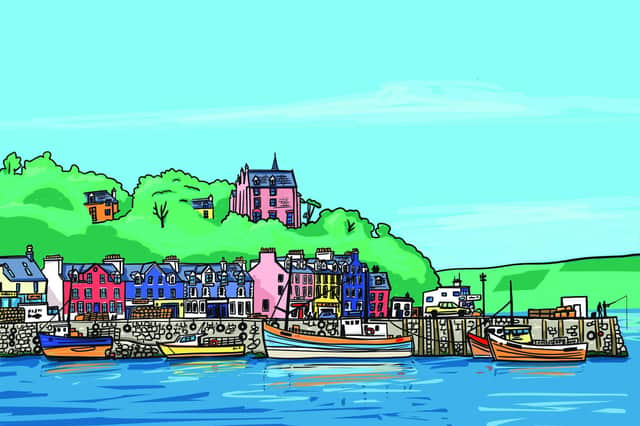Kirsty McLuckie on picturesque problems


The latest list, from Stelrad, of the most picturesque destinations – based on the number of Instagram hashtags – puts Tobermory on the Isle of Mull in the top spot.
The multi-hued fishermen’s cottages overlooking the bay have always attracted tourists, whether they be watercolourists on a Scottish Grand Tour in the18th Century, or their modern equivalent – inveterate selfie-takers.
Advertisement
Hide AdAdvertisement
Hide AdA whole generation with nostalgic memories of the charming children’s series Balamory, set in the village, are likely adding to the seasonal influx.
Cullen on the Moray Coast is the second-most picturesque location in Scotland, while Applecross on the north-west coast takes third spot. All three are relatively small places whose residents have to cope with visitors in the kind of burgeoning numbers that may be more easily absorbed in more traditional city hotspots that target tourists.
I know the advantages of seasonal holidaymakers; without their spending, many of the scant amenities in our small village would not survive – but being a popular short break destination does come with added problems.
The biggest, of course, is the difficulty for young people to be able to afford to stay in the area.
In some of the most scenic areas of Scotland, more than half of all properties are second homes or holiday rental properties, and they tend to be just the sort of houses which would suit first-time buyers. But cash-rich part-timers and investment buyers can usually outbid those on a budget.
There are other problems though, for those that live in pretty places.
Rural roads are not built for increased traffic, particularly of visitors who have not fully grasped how to drive on a single track. This time of year sees tailbacks whenever one multi-vehicle convoy meets another. Add in caravans to the year-round logging trucks, and heading to the shops can be hair-raising.
Our local beach, empty for much of the year, becomes jam-packed in summer. The single layby at its entrance simply cannot contain the car traffic, and blockages are frequent – annoying if you need to get your sheep to market, as has happened, and downright dangerous if emergency vehicles cannot get through.
Advertisement
Hide AdAdvertisement
Hide AdBut some traditional tourist hotspots are introducing technology to solve these problems.
The Isle of Skye, which attracts half a million visitors a year, has just launched a system which uses sensors located at key sites to track movements of people and vehicles. The app – inspired by those in use in Barcelona, Amsterdam and Yellowstone Park – will provide live updates to alert visitors to busy times at places such as the Old Man of Storr, the Fairy Pools and Quinaig.
By helping visitors avoid logjams, the technology could bring to an end to scenes of gridlocked vans and cars clogging narrow roads leading to the most popular destinations.
Such innovation might keep our country’s picturesque spots looking that way.
- Kirsty McLuckie is property editor at The Scotsman